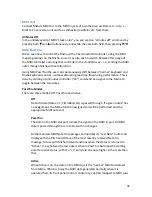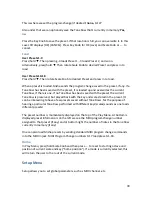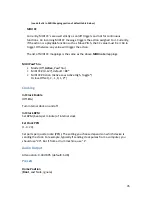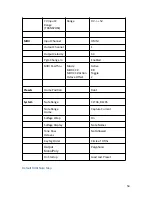
•
Root: Home position is root of scale (default), in the middle octave.
When a Tone
Row is saved to the preset, it loads the Root Home position of the Tone Row,
which is the first note in the Tone Row.
•
Last Note: Home position as defined by last note played before saving the preset
•
Ignore: Home position retained, i.e., loading a preset doesn’t change current
position
(After loading a preset, pressing 0 sounds the home position, which in the case of the
“ignore” option is the last note played.)
Scales
Misha comes pre-loaded with 100 factory scales, grouped into 4 banks:
●
S1: Factory Bank 1 (50 scales)
●
S2: Factory Bank 2 (50 scales)
These encompass commonly used scales such as Major, Chromatic and Pentatonic, plus
quite a variety of unusual scales composed of notes from the standard Western twelve
tone equal tempered scale (Messaien modes, jazz scales, etc.), as well as some
“Xenharmonic” (microtonal) scales (just intonation, international, non-standard
equal-tempered, non-octave repeating, etc.).
In addition, the user can create or import his or her own scales, utilizing the “scala”
format. These are loaded via the SD Card into the user banks.
●
U1: User Bank 1
●
U2: User Bank 2
(The user banks come preloaded with a copy of the factory bank scales, and are then
overwritten as new user scales are assigned to their slots)
Scala is a versatile, standard format for defining scales that allows for both standard
Western and microtonal scales, defined either by frequency or by ratios. Scales need not
even repeat at the octave, as is the case with the Bohlen-Pierce scale, e.g.
A lot of the research performed to collect this group of 100 scales comes from
very comprehensive scale website
on his site allows a visitor to select a subset of the 12 notes of the scale and
then tells you the name of the scale.
You can find more information on scala format
and an enormous trove of scala files
46
















































